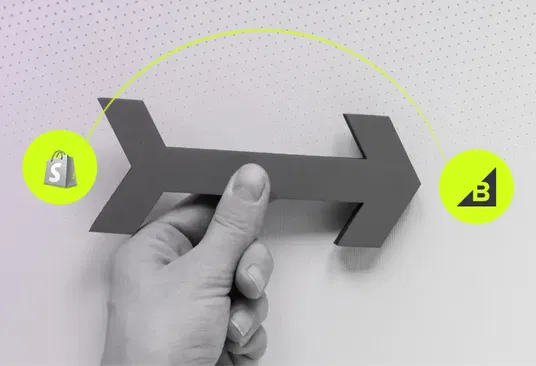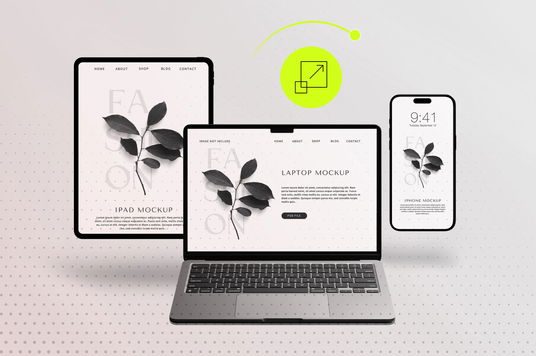How to Design a Baby Product Store That Prioritizes Parental Trust

- Understanding Parental Psychology in Online Shopping
- Essential Trust Signals for Your Homepage
- Age-Based Product Navigation and Labeling
- Displaying Safety Certifications and Standards
- Transparent Product Information Architecture
- Customer Reviews and Parent Testimonials
- FAQ Optimization for Baby Product Concerns
- Checkout Process Trust Elements
- Mobile-First Design for Busy Parents
- Implementation Checklist
- Ready to Choose the Right Development Partner?
When parents shop for baby products online, they're not just buying items—they're making decisions that directly impact their child's safety, comfort, and development. This heightened responsibility creates a unique shopping psychology where trust signals for baby product websites become the deciding factor between a sale and an abandoned cart.
Unlike other eCommerce categories, baby product stores must address deep-seated parental concerns about product safety, age appropriateness, and brand reliability. Understanding parental buying behavior baby products reveals that 89% of parents research products extensively before purchasing, with safety being their primary concern.
In this comprehensive guide, we'll explore how to design a baby product store that not only meets these unique requirements but builds lasting trust with your parent customers. From homepage design to checkout optimization, every element should communicate safety, transparency, and care.
Understanding Parental Psychology in Online Shopping
Parents approach online shopping with a fundamentally different mindset than other consumers. Their decision-making process is driven by protective instincts and the desire to provide the best for their children, which creates specific behavioral patterns that successful baby product stores must address.
The Safety-First Mindset
When parents browse baby products online, safety concerns dominate their thought process. They're constantly evaluating potential risks, from choking hazards to chemical exposure. This means your product pages must proactively address these concerns before they become barriers to purchase.
Research shows that 76% of parents will abandon a purchase if they can't find adequate safety information within the first 30 seconds of viewing a product page. This statistic underscores the importance of making safety information immediately visible and easily accessible.
Information-Seeking Behavior
Parents are thorough researchers. They read reviews, compare products across multiple sites, and seek validation from other parents. Your store design should facilitate this research process rather than hinder it. This includes providing comprehensive product information, easy comparison tools, and prominent customer reviews.
Parents spend an average of 3.2x longer researching baby products compared to other consumer categories, with 67% consulting multiple sources before making a purchase decision.
— Baby Product Consumer Research Institute, 2024
Essential Trust Signals for Your Homepage
Your homepage serves as the first impression and trust-building opportunity with parent customers. Effective baby ecommerce homepage design ideas should immediately communicate credibility, safety, and understanding of parental needs.
Above-the-Fold Trust Elements
The most critical trust signals should be visible without scrolling. These include:
- Safety Certifications: Display prominent badges for CPSC compliance, ASTM standards, and other relevant safety certifications
- Parent Testimonials: Feature authentic reviews from real parents with photos and specific product experiences
- Expert Endorsements: Showcase pediatrician recommendations or child development expert approvals
- Return Policy: Clearly state your hassle-free return policy for peace of mind
Trust-Building Navigation
Your main navigation should reflect parental priorities. Instead of generic categories like "Products" or "Shop," use parent-focused language such as "Safe Sleep Solutions," "Feeding Essentials," or "Developmental Toys." This immediately shows you understand their needs and priorities.
Consider implementing a prominent "Safety Standards" or "How We Test" link in your main navigation. This demonstrates transparency and gives parents easy access to the safety information they're seeking.
Age-Based Product Navigation and Labeling
One of the most effective ways to build trust with parents is through clear, accurate age-based labeling for baby product categories. Parents need to quickly identify products appropriate for their child's developmental stage, and confusion in this area can immediately erode trust.
Developmental Stage Categories
Organize your product categories around developmental milestones rather than arbitrary age ranges. For example:
- Newborn (0-3 months): Focus on basic needs like feeding, sleeping, and comfort
- Infant (3-6 months): Introduce sensory development and tummy time products
- Mobile Baby (6-12 months): Safety products and exploration tools
- Toddler (12+ months): Independence-building and learning products
Clear Age Labeling Standards
Every product should display age recommendations prominently and consistently. Use both age ranges and developmental descriptors to help parents make informed decisions. For example: "6-12 months (sitting independently)" provides more useful information than just "6-12 months."
Implement visual cues like color coding or icons to make age categories instantly recognizable. This helps busy parents navigate quickly while building confidence in your organization and attention to detail.
Displaying Safety Certifications and Standards
Safety certifications are perhaps the most important trust signals for baby product websites. However, simply displaying certification logos isn't enough—you need to educate parents about what these certifications mean and why they matter.
Certification Education
Create a dedicated "Safety Standards" page that explains each certification your products carry. Include information about:
- What each certification tests for
- Why it's important for baby safety
- How often products are tested
- What parents should look for when shopping
Product-Level Safety Information
On individual product pages, don't just show certification badges—explain what they mean for that specific product. For example, instead of just displaying a CPSC logo, include text like "CPSC certified for safe sleep - meets all federal safety standards for infant sleep products."
For parents who want to dive deeper into safety information, consider offering specialized baby & kids ecommerce development services that can implement advanced safety tracking and certification management systems.
Transparent Product Information Architecture
Parents need comprehensive product information to make confident purchasing decisions. Your product pages should anticipate and answer every possible question a concerned parent might have.
Essential Product Information
Every product page should include:
- Detailed specifications: Dimensions, weight, materials, and construction details
- Safety information: Age recommendations, warnings, and proper use instructions
- Care instructions: Cleaning, maintenance, and storage guidelines
- What's included: Complete list of all components and accessories
Visual Information Presentation
Use multiple high-quality images showing the product from various angles, in use, and with size references. Include close-up shots of important details like safety features, material textures, and assembly points.
Consider adding instructional videos or 360-degree product views to give parents a complete understanding of the product before purchase.
Customer Reviews and Parent Testimonials
Parent testimonials carry exceptional weight in the baby product space. Other parents' experiences provide the social proof and reassurance that anxious parents need to feel confident in their purchase decisions.
Authentic Review Systems
Implement a review system that encourages detailed, helpful feedback. Ask specific questions in your review prompts:
- How did your child respond to this product?
- What age was your child when you started using this?
- How easy was assembly/setup?
- Would you recommend this to other parents?
Photo and Video Reviews
Encourage customers to submit photos and videos of their children using the products. Visual reviews are incredibly powerful for baby products because they show real-world usage and help other parents visualize how the product will work for their child.
Consider offering small incentives for detailed reviews with photos, as these provide immense value to future customers and significantly boost conversion rates.
Baby product purchases influenced by parent reviews have a 43% higher customer satisfaction rate and 28% lower return rate compared to purchases made without review consultation.
— Parental Consumer Behavior Study, 2024
FAQ Optimization for Baby Product Concerns
A well-optimized FAQ section can address parental concerns before they become purchase barriers. Baby item ecommerce FAQ optimization should focus on the specific questions and worries that keep parents up at night.
Safety-Focused FAQ Categories
Organize your FAQ around parental concerns:
- Safety & Standards: Certification questions, age appropriateness, and safety testing
- Usage & Development: How products support child development and proper usage
- Care & Maintenance: Cleaning, storage, and longevity questions
- Shipping & Returns: Delivery times, packaging safety, and return policies
Proactive Problem Solving
Don't wait for customers to ask questions—anticipate their concerns. Include FAQs about common worries like "Is this product free from harmful chemicals?" or "What if my child outgrows this quickly?"
Use your customer service data to identify the most frequently asked questions and ensure these are prominently featured in your FAQ section.
Common Baby Product Store FAQs
1. How do I know if a product is safe for my baby's age?
All our products include clear age recommendations based on developmental milestones and safety testing. Look for the age range prominently displayed on each product page, along with specific developmental indicators like "for babies who can sit unassisted."
2. What safety certifications should I look for?
Key certifications include CPSC (Consumer Product Safety Commission) compliance, ASTM International standards, and JPMA (Juvenile Products Manufacturers Association) certification. We provide detailed explanations of each certification on our Safety Standards page.
3. Can I return a product if my baby doesn't like it?
Yes! We offer a 30-day return policy for all products in original condition. We understand that babies can be particular about their preferences, and we want you to feel confident in your purchase.
4. How quickly do you ship baby products?
We understand parents often need products quickly. Most orders ship within 24 hours, with expedited shipping options available. All products are carefully packaged to ensure they arrive safely.
Checkout Process Trust Elements
The checkout process is where trust becomes most critical. Parents who have spent time researching and comparing products need final reassurance that their purchase is secure and their information is protected.
Security and Privacy Assurance
Display security badges prominently throughout the checkout process. Include SSL certificates, payment processor logos, and privacy policy links. Parents are particularly concerned about protecting their family's personal information.
Consider adding a brief security statement like "Your information is encrypted and secure. We never share customer data with third parties."
Order Confirmation and Tracking
Provide immediate order confirmation with detailed information about what happens next. Include expected shipping dates, tracking information availability, and customer service contact details.
Send proactive updates throughout the fulfillment process to keep parents informed and reduce anxiety about their order status.
Mobile-First Design for Busy Parents
Parents often shop on mobile devices during brief moments throughout their day—while the baby naps, during feeding time, or late at night. Your mobile experience must be optimized for these quick, focused shopping sessions.
Streamlined Mobile Navigation
Simplify navigation for mobile users with clear, thumb-friendly buttons and intuitive menu structures. Parents shouldn't have to struggle with tiny links or complex navigation while juggling a baby.
Implement features like:
- One-thumb navigation design
- Quick add-to-cart buttons
- Simplified checkout process
- Easy access to customer reviews
Fast Loading and Offline Capabilities
Mobile pages must load quickly, even on slower connections. Parents don't have time to wait for slow-loading pages, and they may be shopping in areas with poor connectivity.
Consider implementing progressive web app features that allow parents to browse previously viewed products even when offline.
Implementation Checklist
Use this comprehensive checklist to ensure your baby product store includes all essential trust-building elements:
Homepage Trust Signals
- ✓ Safety certification badges prominently displayed
- ✓ Parent testimonials with photos above the fold
- ✓ Clear return policy statement
- ✓ Expert endorsements or pediatrician recommendations
- ✓ Trust-focused navigation language
Product Page Requirements
- ✓ Clear age recommendations with developmental context
- ✓ Comprehensive safety information
- ✓ Multiple high-quality product images
- ✓ Detailed specifications and materials list
- ✓ Customer reviews with photos/videos
- ✓ Care and maintenance instructions
Site-Wide Trust Elements
- ✓ Dedicated safety standards page
- ✓ Comprehensive FAQ section
- ✓ Secure checkout with visible security badges
- ✓ Mobile-optimized design
- ✓ Fast loading times
- ✓ Easy customer service access
🎯 Key Takeaways
- Parents prioritize safety above all other factors when shopping for baby products online
- Trust signals must be visible immediately and consistently throughout the shopping experience
- Age-based navigation and clear developmental labeling help parents find appropriate products quickly
- Comprehensive product information and safety certifications reduce purchase anxiety
- Parent testimonials and reviews provide crucial social proof for confident decision-making
- Mobile optimization is essential for busy parents shopping in brief moments throughout their day
- FAQ sections should proactively address common parental concerns and safety questions
- Transparent policies and secure checkout processes build final purchase confidence
Ready to Choose the Right Development Partner?
Building a baby product store that truly prioritizes parental trust requires specialized expertise in both eCommerce development and understanding parental psychology. Our team has helped numerous baby and children's brands create trustworthy, conversion-optimized online stores.
Schedule Your Free ConsultationAbout 1Center
1Center is a leading eCommerce development agency specializing in creating trust-focused online stores for baby and children's product brands. Our team combines deep technical expertise with understanding of parental buying behavior to build stores that convert visitors into confident customers. We've helped dozens of baby product brands increase their online sales through strategic design, comprehensive safety integration, and parent-focused user experiences.
From initial concept to ongoing optimization, we partner with baby product brands to create eCommerce experiences that parents trust and love. Our specialized approach to baby and kids eCommerce development ensures your store meets the unique needs of parent customers while driving sustainable growth for your business.
Written byPublished July 17, 2025
1Center


